Portfolio
University of West Florida GIS students apply cutting edge data modeling and visualization technologies to interpret location-based data and design solutions to address real world issues. The UWF GeoData Center routinely partners with area organizations to utilize data and mapping expertise that makes an impact across the region and in our local community.

St. Michael's Cemetery GIS
The Saint Michael's Cemetery interactive map allows users to take a virtual tour of the cemetery and view all the grave, marker, botanical, soil, and topographical GIS layers created for the SMC project. Nowhere else in our society are we as cognizant of the cultural landscape of our communities as in our historic cemeteries. Understanding a cemetery’s relationship to the physical and cultural landscape of the early community it served, and in many cases, the modern community it continues to serve enhances our understanding of how our communities were organized and grew. St. Michael's Cemetery, once situated on the outskirts of a colonial town, is today an eight-acre green space in the heart of urban, historic Pensacola, Florida. Like most historic cemeteries, St. Michael’s reflects the social history of the community it is associated with.
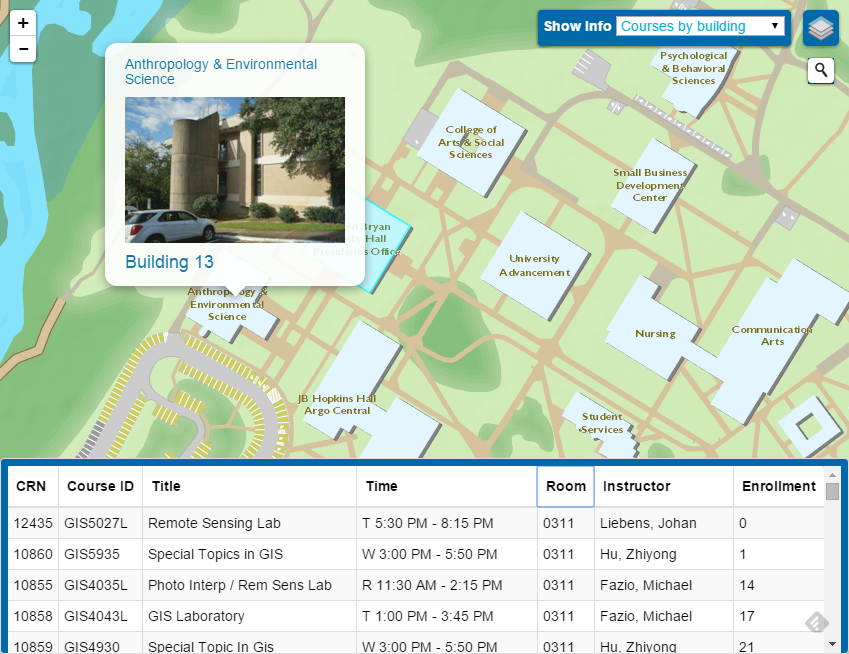
Campus WebGIS Project
The UWF Interactive Campus Web-GIS is a project by the UWF GeoData Center to promote use of GeoSpatial technology and to raise awareness of the geography of our 1600+ acre campus.
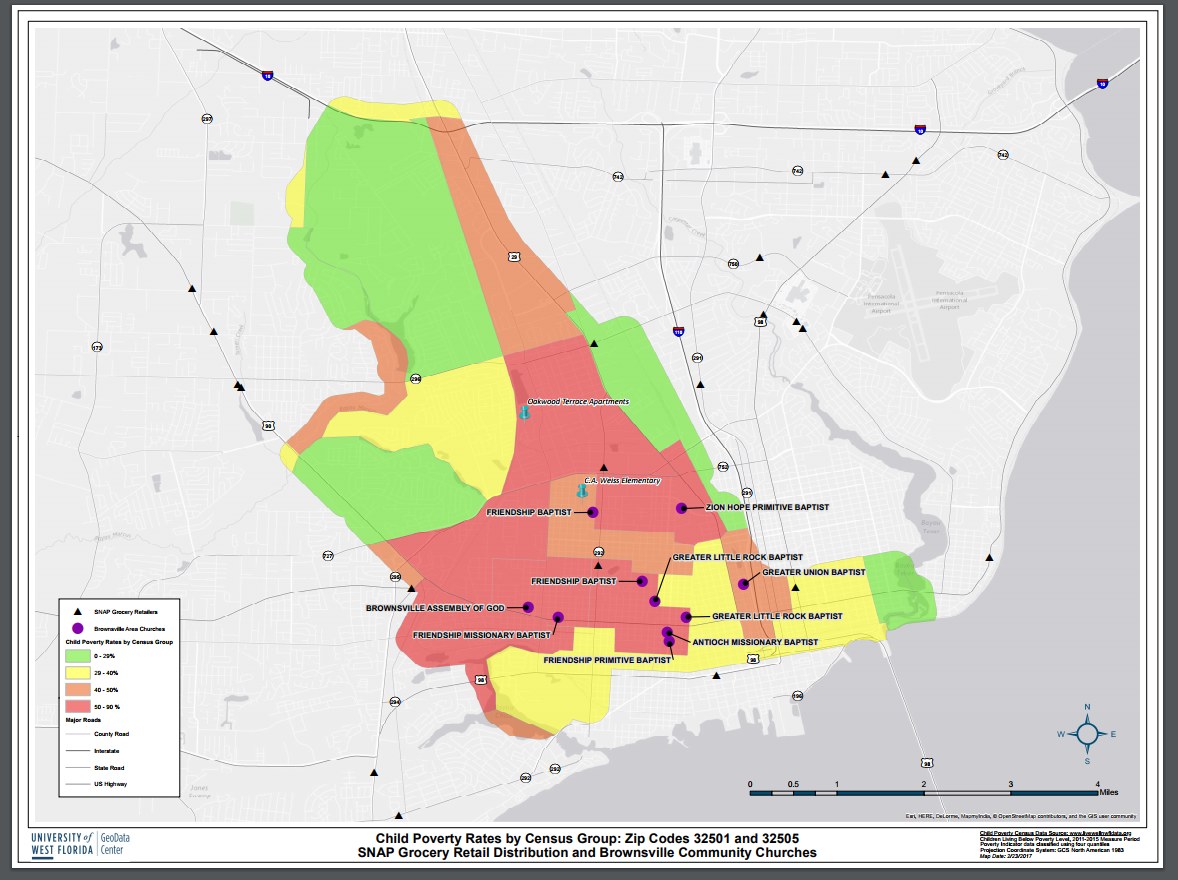
Local Child Poverty Rates and Food Desert Mapping
The GDC has been working closely with Live Well Partnership to assist in their efforts of assessing and improving the health of the Northwest Florida community. Mapping and GIS analysis are utilized by the Livewell group to help raise awareness in the community, plan outreach programs, and seek funding. The sample shown here represents child poverty rates per census group in the key focus area of zip codes 32501 and 32502 in Escambia County, FL. Grocery centers and large church congregations were mapped along with this data as part of an ongoing effort to make healthy food readily accessible to families living in food deserts.
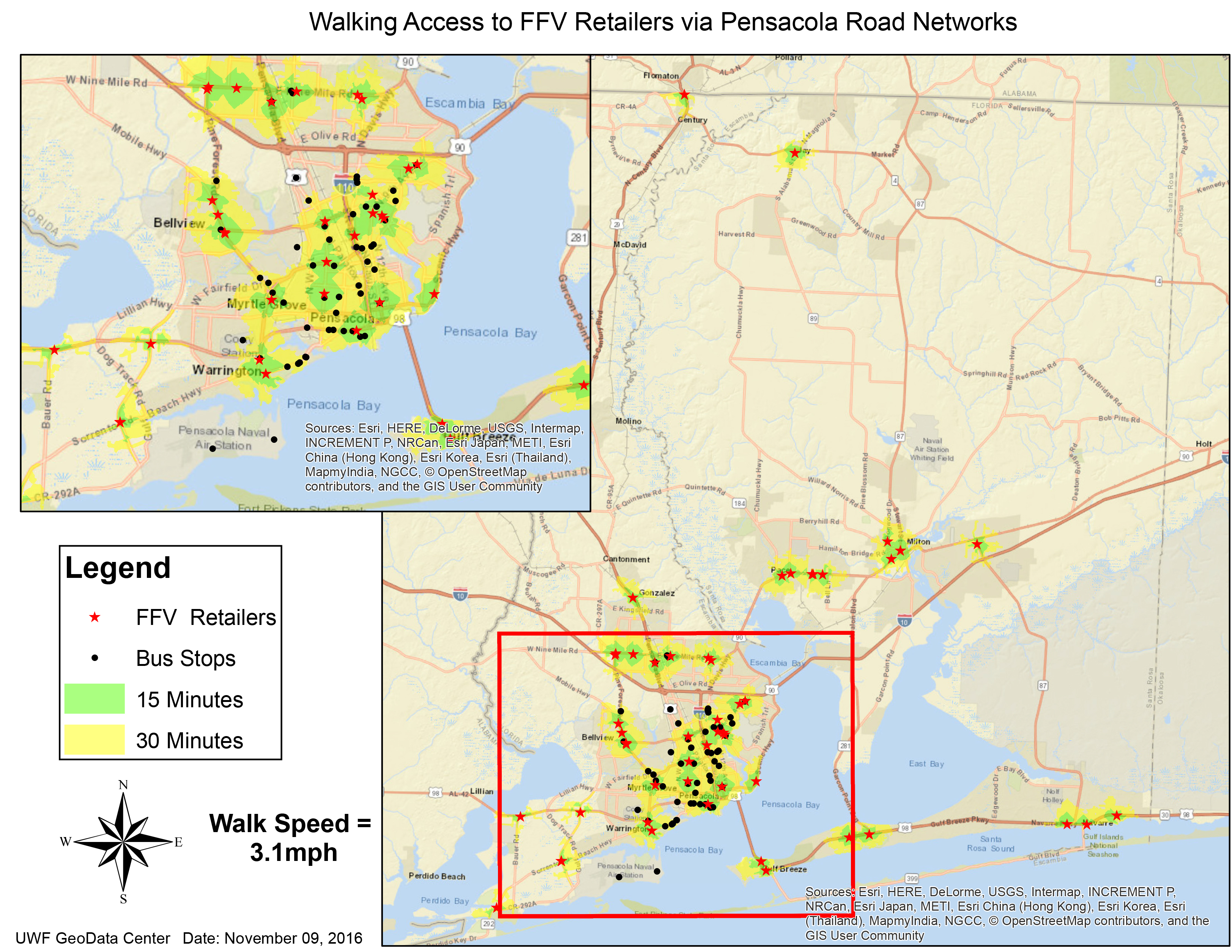
SNAP Food Deserts Escambia and Santa Rosa Counties
Performing network analysis: Using road networks to calculate possible transit distances from a certain point allows users to see the coverage area for any given feature. Range can be a function of distance or time. In this case, we used road networks to investigate equity of healthy food access (grocery stores) by those communities who need it most and may not have a car to travel far distances.
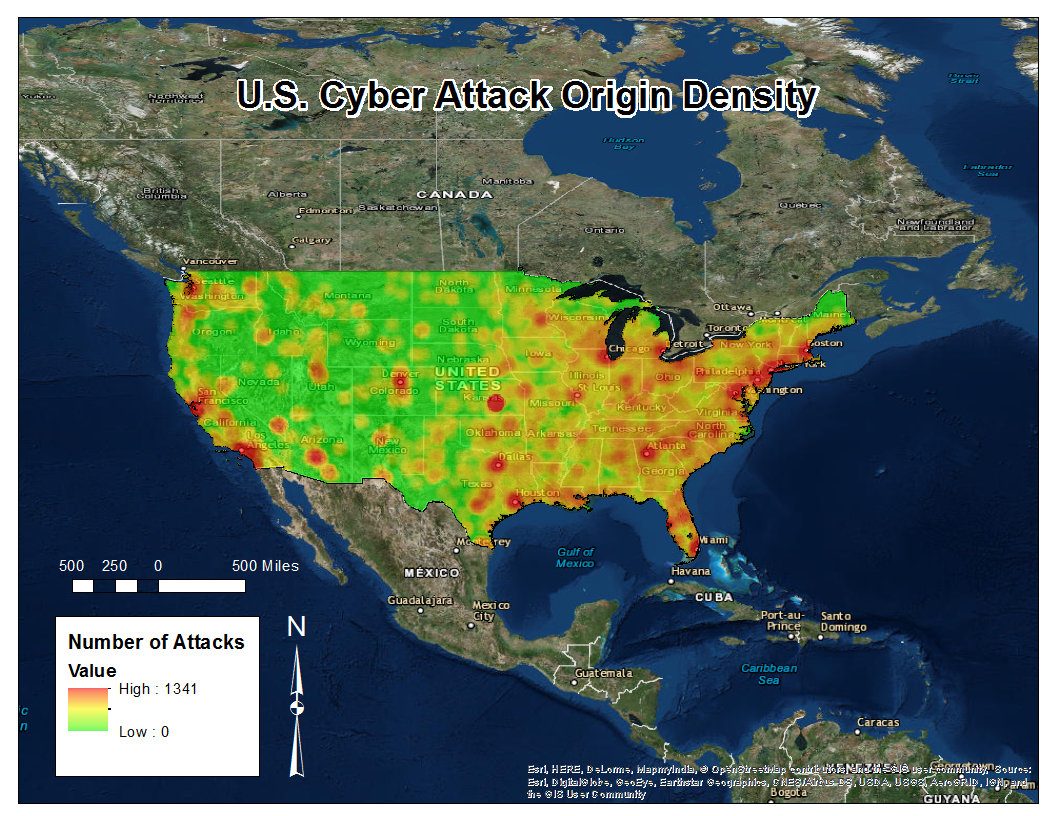
Cyber Attack Spatial Patterns
Collecting the IP addresses of over a million cyber attacks that occurred over a three month span allowed us to Geo-locate and map the sources of those cyber attacks, and look for patterns there-in. One location was found to be the origin of over 30,000 attacks.
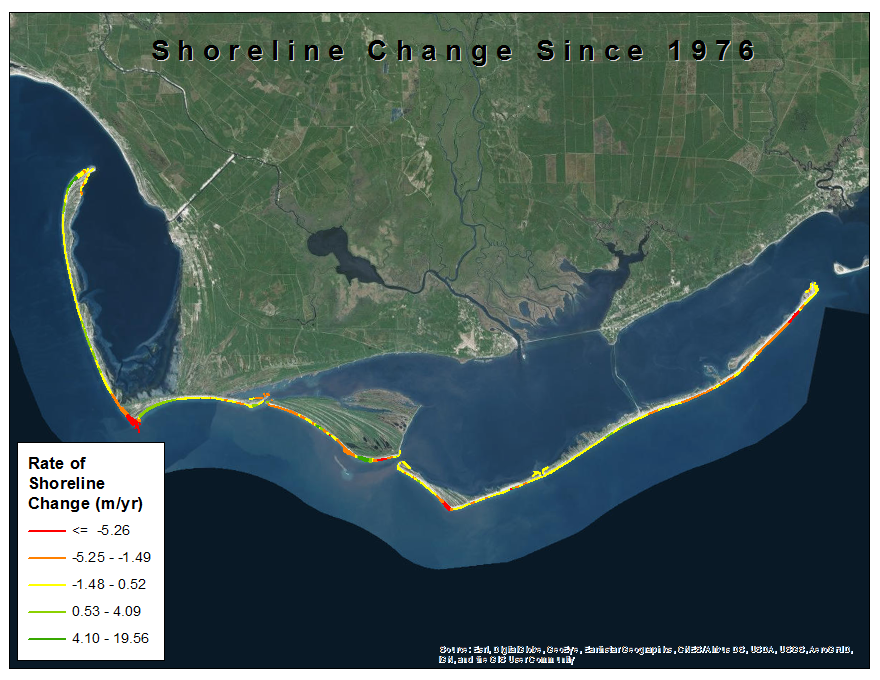
Shoreline Change 1972-Present
Using satellite imagery from 1972 until present, we are able to detect areas along the coast that have suffered the most severe erosion. By delineating the shorelines of each year and using those as the input to the USGS Digital Shoreline Analysis System (DSAS), you can quantifiably and visually highlight areas that have suffered the greatest amount of erosion or deposition.
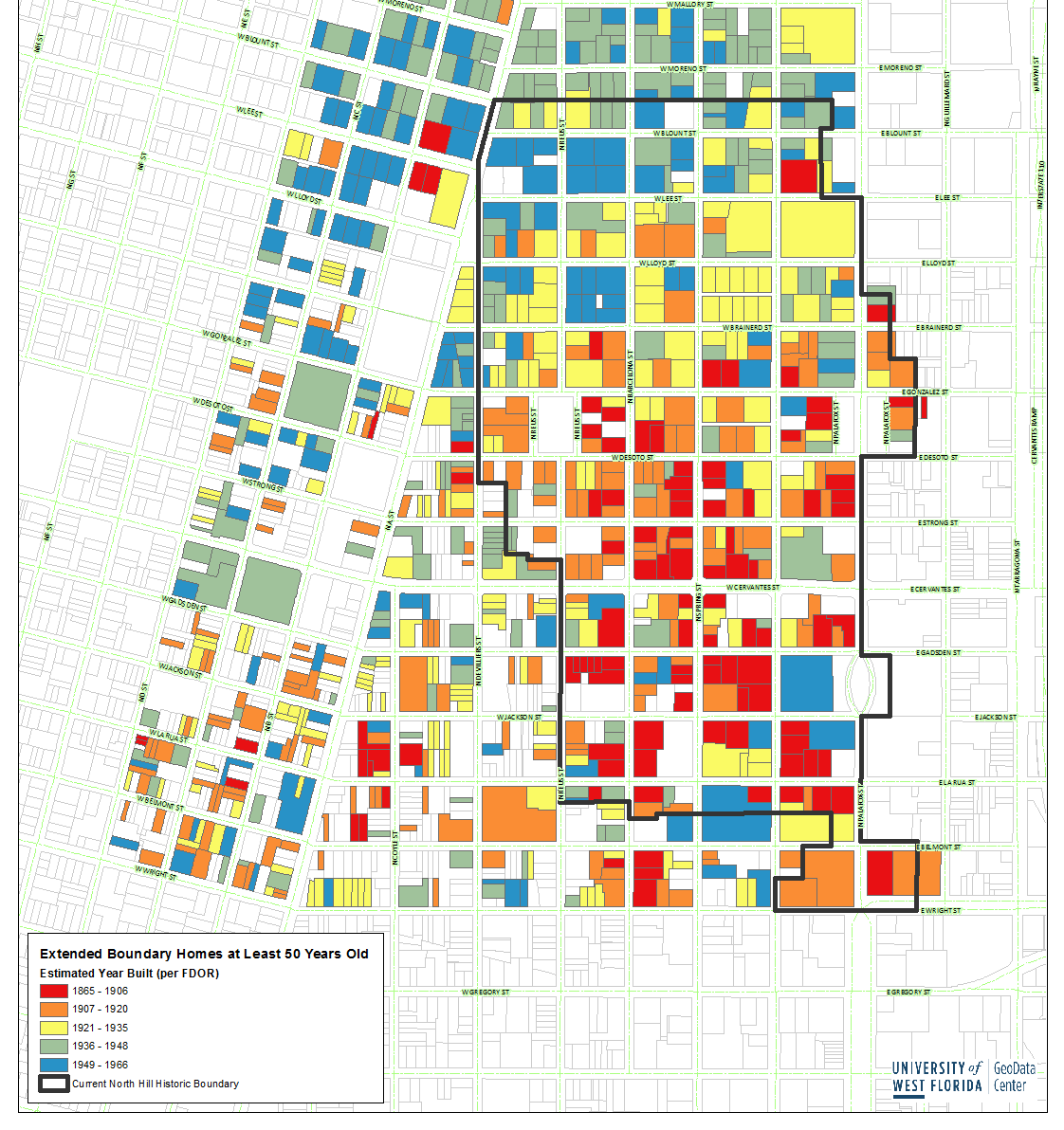
Historic Preservation Home and Boundary Mapping
The North Hill Preservation Association is dedicated to preserving and maintaining the unique and beautiful historic homes, parks, and cemeteries in the North Hill neighborhood near downtown Pensacola, FL. The Geo Data Center at UWF contributes boundary maps and spatial analysis for the current and potentially expanding historic community. The sample shown here uses Florida Department of Revenue property tax data to identify and categorize homes that are at least 50 years old for planning purposes in this historic preservation district.
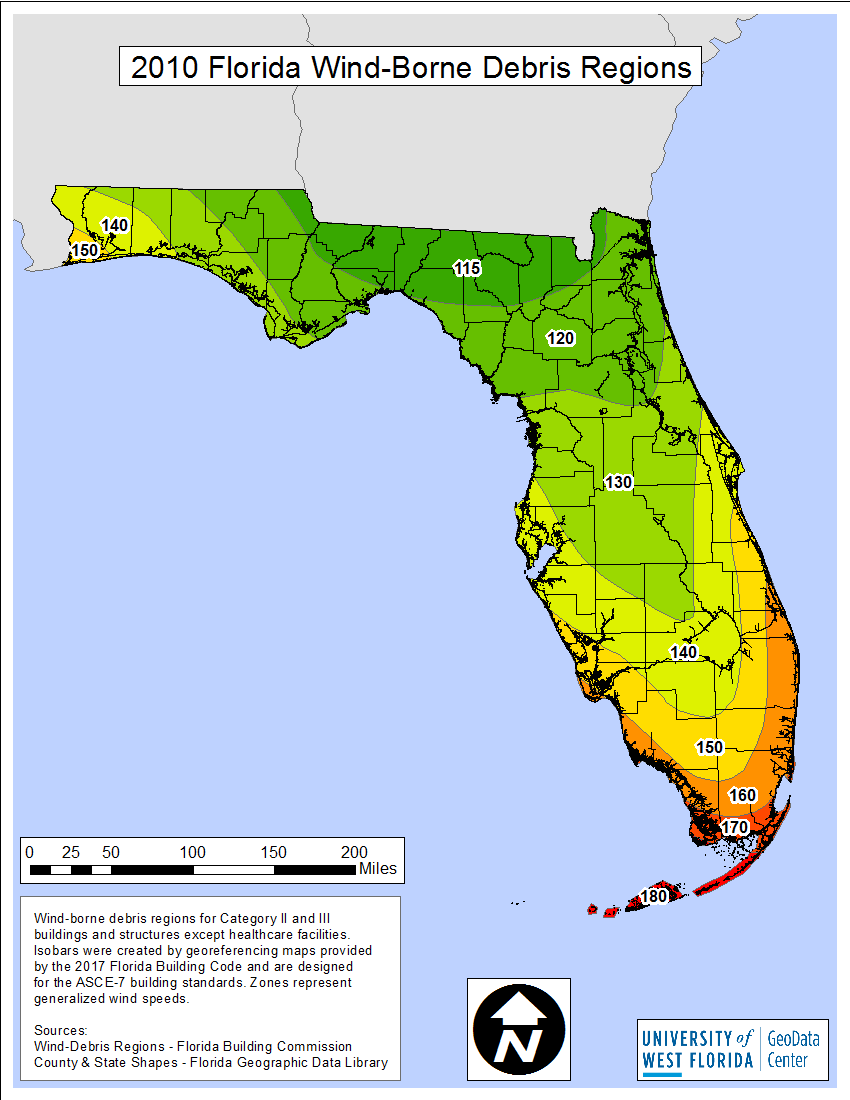
Florida Wind Zones
A map representing the 2010 Florida Wind-Borne Debris Regions also commonly known as “wind zones”. Isobars were created by geo-referencing maps provided by the 2017 Florida Building Code and are designed for the ASCE-7 building standards. Zones represent the minimal wind speeds that structures within must be able to withstand. The state level wind zones are somewhat generalized and it is up to the county level governments to create their own detailed zones that at least meet these minimum standards.

SEDAAG Meeting GeoProgram
UWF hosted the 2015 annual meeting of the Southeastern Division of the Association of American Geographers in Pensacola. This web-GIS application is an experiment in creating a geospatial conference agenda using the ArcGIS platform.





